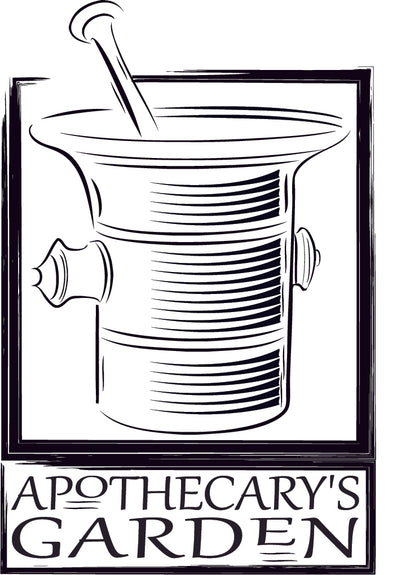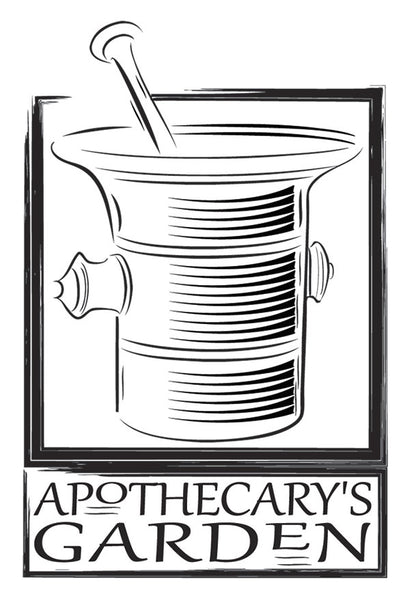U.S. CUSTOMERS: Tariffs are included in the product prices until the situation changes. Click here for more info.
U.S. CUSTOMERS: Tariffs are included in the product prices until the situation changes. Click here for more info.
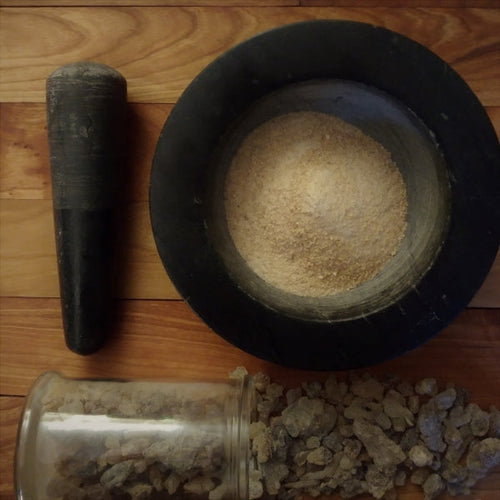
Frankincense as Medicine-Truth, Myth, and Misinformation
by Dan Riegler January 15, 2025 11 min read
This is an updated and revised version of my "Medicinal Frankincense FAQ" from 2018. I couldn't transfer it from my Blog when I moved my shop to this platform 2 years ago. I want to thank all my followers and customers for pressuring and guilting me into republishing it.
Frankincense Misinformation
Back in 2018, two BIG essential oil companies were promoting Frankincense essential oil as anti-cancer and full of Boswellic acids. One went as far as publishing misleading "Scientific papers" in peer-reviewed journals. If the public didn't take the time to read the papers thoroughly and in detail, they would assume they were legit. One giveaway was that there was often one author on their board of directors.
Now, in 2025, these companies no longer push Frankincense essential oil as a cancer cure. However, the myth persists.
Just in case you don't have the patience to read all the way through, let me tell you now that the anti-cancer and anti-inflammatory Boswellic acids are not present in the essential oil of Frankincense. They are found only in the solid resin portion of Frankincense and the only way to benefit from the therapeutic qualities of the Boswellic acids is to utilize the resin.
The Myth
I still encounter those who believe Frankincense essential oil contains Boswellic acids and cures cancer. They often take the essential oil internally or apply it to various parts of their bodies.
Frankincense essential oil is no more anti-cancer than many other essential oils. Frankincense resin, however, contains Boswellic acids, which show broad anti-cancer and anti-inflammatory activity in the laboratory and have been used in traditional medicine for thousands of years.
To benefit from these healing compounds in Frankincense, one must use the resin of Frankincense. Not the essential oil. There are no Boswellic acids in the essential oil of Frankincense. In fact, powdered whole Frankincense resin has many times more Boswellic acids by weight than any essential oil of Frankincense. And at a fraction of the price.
In Traditional Chinese Medicine, the resin of Frankincense is often "cooked" to remove the essential oil before it is added to a formula or taken internally. Why? Because it can be irritating and does not contain the important therapeutic compounds.
The moral of this story is that we tend to be complacent as a group, seeking and accepting authority and "expert" opinions online without question. This is one way we give away our power and effectiveness in the world. Please research everything independently and reach your own conclusions. Don't blindly trust anything you read online. Not even what I write here.
What is Frankincense?
A short answer is- That Frankincense and Myrrh are the oleo gum resins exuded by the Boswellia and Commiphora trees, respectively. Both are members of the Burseraceae plant family, sometimes called "The incense tree family."
Frankincense and Myrrh resins have been used in medicine, perfume, and incense for thousands of years. Where they grow is what I like to call the Boswellia Belt, which reaches from the West coast of Africa, east through the horn of Africa and southern Arabia up through India to Pakistan. There are just under 20 types of Frankincense trees at last count, but only 8 or 9 of them provide us with a marketable resin.
Just under the bark of these trees is a network of ducts (Traumatic Resin Ducts) that produce and distribute fragrant oleo gum resin. When the trees are damaged, the oleo gum resin is created and sent to the surface, where it dries and is later collected. The trees produce this aromatic exudate to combat pathogens and insects, such as long-horn beetles, and to create a protective "Scab" over wounds. These are our much-valued Frankincense and Myrrh tears.
What are the traditional uses of Frankincense?
Off the top of my head, a short list of traditional therapeutic applications associated with Frankincense would include- treating arthritis, rheumatism, ulcers, asthma, bronchitis, gastrointestinal disorders, tumours, cancers, infertility, moods, anxiety/depression and memory loss, improving brain function, addressing ageing skin and flagging libido.
- Frankincense Serrata is used traditionally in India and Asia, whole, in powder, pill, poultice and oil, for arthritis, rheumatoid arthritis, osteoarthritis, asthma, bronchitis, ulcerative colitis, bronchial issues, various cancers and as an ingredient in skincare and beauty products. It can be made into an oil, lotion or creme for external applications.
- In Arabia, Frankincense Sacra, and especially the exclusive Royal Green Hojari type have been chewed for millennia for oral care, ulcers and general physical/mental well-being. It has been used as an aphrodisiac and to treat infertility in both men and women. It is sometimes taken as a tea steeped in room-temperature water overnight and sipped during the day for inflammations, coughs, congestion, and colds. You can find the recipe for a traditional Frankincense tea HERE
- In traditional Iranian medicine, Frankincense is still consumed by pregnant women to increase the intelligence, (and courage), of their offspring, and is generally considered to contribute to one's mental acuity, emotional stability and spiritual clarity. It is sometimes used as a general tonic and restorative.
- Frankincense Sacra, Frankincense Carterii and Frankincense Frereana from Somalia have also been used to address fertility issues in men and are considered aphrodisiacs for men and women.
- Though Frankincense Frereana from Somalia does not contain Boswellic acids, it is also a powerful anti-inflammatory used traditionally to treat inflammations of joints, the GI tract and arthritis. Laboratory studies show it can reduce brain inflammation due to tumors, head injuries and stroke. Similar to Pistacia lentiscus of Greece, Mastic Chios, Boswellia Frereana kills the H.pylorii bacteria, which causes stomach ulcers. It is used extensively as a high-end chewing gum throughout Arabia and is the Frankincense type favourited by the Coptic Church.
- Frankincense Dalzielii is a relative newcomer to the Western market and is used in much the same way as Frankincense Sacra. In the past, it was often sold as the high-end Royal Green hojari Frankincense due to its well-formed and abundant green tears. It is mainly distinguished from Boswellia Sacra by its aroma, which contains notes of mint and Camphor.
- Frankincense Papyrifera from Ethiopia/Eritrea/Kenya and Sudan, which is a source of Boswellic acids, also contains Incensole acetate, which is considered a psychoactive compound that crosses the blood-brain barrier, reducing anxiety and elicits feelings of heightened spirituality and well-being. The incensole and Incensole acetate are delivered to us using the whole oleoresin internally, through pyrolysis (burning as incense as is done in many churches), and when using the diluted essential oil externally. Frankincense Papyrifera is often called "Church Incense" and is used by many churches worldwide..
- Frankincense Occulta from Somalia is the newest Frankincense species and was discovered only a handful of years ago. In Somalia and Somaliland it is used in local folk medicine traditions and to bulk up Frankincense Carterii shipments.
- I have to point out that ALL the above-mentioned types of Frankincense resin are used as chewing gum by the locals for their health benefits.
- Whole Frankincense, not the essential oil of Frankincense, has been used in the Traditional Medicine systems of Asia, Europe, Arabia and Africa for thousands of years.

What are Boswellic acids?
In laboratory studies, one group of compounds in Frankincense resin has shown powerful anti-inflammatory and anti-cancer activity. They are the Frankincense resin acids which are pentacyclic triterpenes and formally named Boswellic acids since they are found in the Boswellia, or Frankincense family. Though other therapeutic compounds and resin acids in Frankincense resin contribute to their therapeutic actions, the Boswellic acids have caught the eye of big Pharmaceutical companies investing in the research. About a dozen Boswellic acids make up approximately half of the resin acids found in the different Frankincense species resins.
Some important facts about Frankincense
- Most types of Frankincense are oleo-gum resins composed of varying proportions of water-soluble gum, resin, and essential oil. These resins and oils are lipophilic (Fat soluble) and mostly dissolve in vegetable oils, alcohol and petroleum distillates.
- Resin acids make up the resin portion of these oleo gum resins, and boswellic acids are the primary resin acids found in Frankincense. These resin acids make up the non-volatile portion of Frankincense, which means they cannot be distilled or found in the essential oil of Frankincense.
- Boswellic acids have been found to inhibit leukotriene synthesis and act as anti-inflammatories. They modulate/regulate the behaviour of Leucocytes which are one of the body's responses to trauma which create inflammation and subsequent pain.(http://bme.virginia.edu/ley/). This makes them valuable in the management of pain.
- Boswellic acids have been shown in studies to be anti-prolific and may also cause apoptosis, (death), in a wide variety of cancer cells in the laboratory. There is, however, little "In vivo" research at this point. They need to be tested on people.
- Though one resin acid in particular, AKBA or acetyl-keto-beta boswellic acid has been the focus of anti-cancer studies, it is only one of many resin acid compounds in Frankincense that have their role to play and indeed likely play more effectively together than separately.
- To be clear, if a little repetitive, Boswellic acids are only present in the resin portion of these oleo-gum-resins, not their essential oils. Though all essential oils have therapeutic properties, the essential oil of Frankincense contains only trace amounts of Boswellic acids. https://en.wikipedia.org/wiki/Boswellic_acid. You can literally knock yourself out with Frankincense essential oil without getting a meaningful amount of Boswellic acids.

Which types of Frankincense contain Boswellic Acids?
So far, research has shown the resins of the following species of Frankincense contain Boswellic acids.
- Boswellia Carterii-Somalia/Somaliland
- Boswellia Sacra-Arabia
- Boswellia Serrata-India
- Boswellia Papyrifera-Ethiopia, Eritrea, Kenya, Uganda and Sudan.
- Boswellia Dalzielii-Nigeria
- Boswellia Occulta-Somalia/Somaliland
It is more than likely that all other types of Frankincense contain Boswellic acids. Many have not yet been analyzed. To learn more about all the different types of Frankincense, see my post A Complete Guide to Frankincense resins
Which type of Frankincense should I use?
In my opinion, no one type of Frankincense listed above is therapeutically "better" than the other. There is no one function that one Frankincense performs better than another, and in my experience, they can be used interchangeably for most cosmetic and therapeutic applications. They mainly differ in their volatile oil composition which contributes to their different aromatic profiles and has nothing to do with their content of resin acids.
Which Frankincense has the most Boswellic acids?
The Resin acid content in any given batch of Frankincense is impossible to gauge accurately. This is because the ratio of gum to resin changes from tree to tree, the season and time of harvest, geographical area, seasonal rainfall and whether the resin is from the first, second, or third cutting of the season.

How can we best use Frankincense and the Boswellic acids for their therapeutic properties?
To benefit from the therapeutic actions of the Boswellic acids, we must work with the oil/alcohol soluble resin portion of Frankincense. Here is a list of products that will deliver the Boswellic acids with instructions for preparing your own.
- An oil infusion/extract of Frankincense, since the resin is lipophilic and dissolves in warm oils. a 1;3 infusion of powdered Frankincense in warm oil is an excellent topical application. This makes a great base for a Frankincense rejuvenating "Serum" or creme and works well in my experience allieviating the symptoms of arthritis and painful joints. That being said, this method does not deliver the full amount of Boswellic acids present in the resin and leaves some behind. , See how to make your own here-
- An infusion of Frankincense "Resin extract" in a carrier oil. "Resin extract" is a term I use to describe Frankincense after all the water-soluble gum has been removed. This product is also what's left over after steam and hydro distillation of Frankincense. This pure resin is often thrown away after distilling Frankincense essential oil because we in the West are obsessed with the essential oil of Frankincense. The resin extract of Frankincense dissolves easily in warm oils and delivers all the valuable therapeutic resin acids, including all the Boswellic acids. (Instructions on how to make your own resin extract are next to be published so stay tuned!!)
- Powdered whole Frankincense can be taken internally to deliver the Boswellic acids in their natural form. Studies show that the Boswellic acids are absorbed better by the blood when consumed with fatty or oily foods. Remember, as mentioned above, these lipophilic resin acids dissolve in oils and fats. The presence of oily food in the stomach facilitates the breakdown and absorption of these resins in the body. That being said, I take 1/4 teaspoon of finely powdered Frankincense 1-3 times a day when I feel the need. I wash it down with water and often take it right after eating. There are no known side effects to consuming Frankincense powder except mild digestive discomfort in a small minority of people. I find the finer the Frankincense is powdered, the better it works. There are, as yet, no in-vivo studies on the effects of taking powdered Frankincense internally. See instructions for making a Frankincense powder here-
- A tincture of Frankincense. A tincture can be taken directly or added to food or beverages. Many people take Frankincense tincture in similar doses to other herbal tinctures. I will republish my post on how to make different types of Frankincense tinctures soon...
- A traditional Frankincense tea. This type of Frankincense tea is a traditional home remedy in most of Arabia. Though water does not dissolve the resin, an emulsion of water-soluble gum and resin is created. A private study found that the Boswellic acids were easier to assimilate using this process. The grounds left over after infusing Frankincense overnight are often consumed. You can find instructions for making a traditional Frankincense tea here-
- There is one more option and method for preparing a therapeutic/cosmetic product that contains the Boswellic acids and that is an emulsion of the whole Frankincense oleo gum resin. But that is for an upcoming post.

Ethics and sustainability of our medicinal and aromatic plants
We are quickly losing our aromatic and medicinal plants worldwide through our terrible resource management. If we don't change how we relate to our natural aromatic and medicinal resources, future generations will have no Frankincense or Myrrh.
The demand for Frankincense essential oil is increasing stress on the trees that produce them and the harvester communities that collect them. Considering that Frankincense essential oil does not contain the most important therapeutic compounds found in Frankincense, this is a misuse of resources. It takes a Kilogram of Frankincense resin to make 2 ounces of essential oil. Meanwhile, the resin portion and the true gift of healing that Frankincense offers us is discarded. That's not very good resource management in my opinion.
Essential oils are perfect for making perfume and to use in Aromatherapy applications. Remember, Aromatherapy means therapy with aroma. But when it comes to therapeutic products, salves, cremes, tinctures, teas, and internal use, the essential oils are window dressings and do not deliver the therapeutic gifts offered by the Frankincense trees.
The increased market demand for essential oils is already exceeding the amount trees can comfortably supply in some areas. Over-harvesting, improper harvesting methods, agricultural encroachment, fires, diseases, insects and grazing animals have reduced the number of mature trees in the wild, the viability of their seeds, and the ability of trees to reproduce. If I recall correctly, the seed germination rate has fallen from 81% to 18% in over-tapped trees in some areas. This is alarming.

Ethical and sustainable collection
There are areas in Kenya, Ethiopia, Somalia and Namibia where Frankincense and Myrrh trees are not tapped, and the oleoresins are sustainably collected. (Samburu women harvest Frankincense neglecta, Commiphora Confusa and Holziana). These are traditions and practices that need to be encouraged, especially when preferring these sources to those where trees are heavily tapped.
Another critical issue that we are ignorant of is the quality of life of the harvesters. These often remote and isolated communities are the true stewards of our medicinal and aromatic resources. They rely on the income from resin collection. In many communities, these trees are an integral component of socioeconomic structures and are treated with reverence and respect. These are the traditions and communities we need to encourage and support. (See my post on sustainable Frankincense collection by the Samburu women of Northern Kenya)
Frankincense and Myrrh trees are extremely easy to propagate. Live branches will spring into root with barely a word of encouragement. Planting and stewarding new trees in the wild would ensure a sustainable and lucrative future for the harvesters and guarantee the consumer an ethical, fair trade and sustainable product. How perfect is that!
The market for Frankincense essential oil will only grow. We need to apply some forethought and foresight in establishing conservation and stewardship programs before it is too late.
You can contribute to establishing healthier trade in these resins in many ways. Foremost by educating yourself, making informed choices and making informed purchases.
If at all possible, choose to use the whole oleo-gum resin or Frankincense resin, not the essential oil. There is no need to add essential oils or fragrances to products you make from the whole resin or resin extract. They already have a beautiful fragrance. And, your product will deliver Frankincense's most valuable therapeutic and cosmetic compounds. Not only that, but you will be taking a little bit of stress off the trees, whose main function nowadays is to churn out essential oils to satisfy our Western appetite.
As always, no matter which Frankincense product you make, always take clear notes!
Your future self will thank you.
Dan
Leave a comment
Comments will be approved before showing up.
Also in Apothecary's Garden Blog
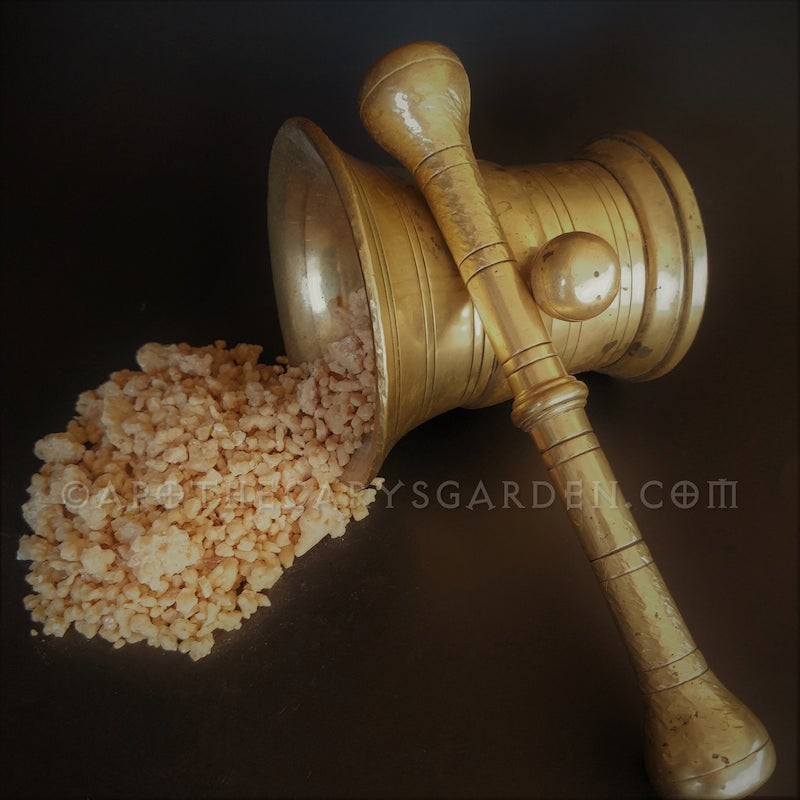
How to make a Frankincense Resin Extract with Boswellic acids
by Dan Riegler February 13, 2025 5 min read
The resin portion of Frankincense contains very valuable therapeutic compounds called Boswellic acids. You won't find them in the water-soluble gum, and you will not find them in the essential oil of Frankincense. We cannot use these resin acids to their fullest extent until we liberate the resin from the gum portion.
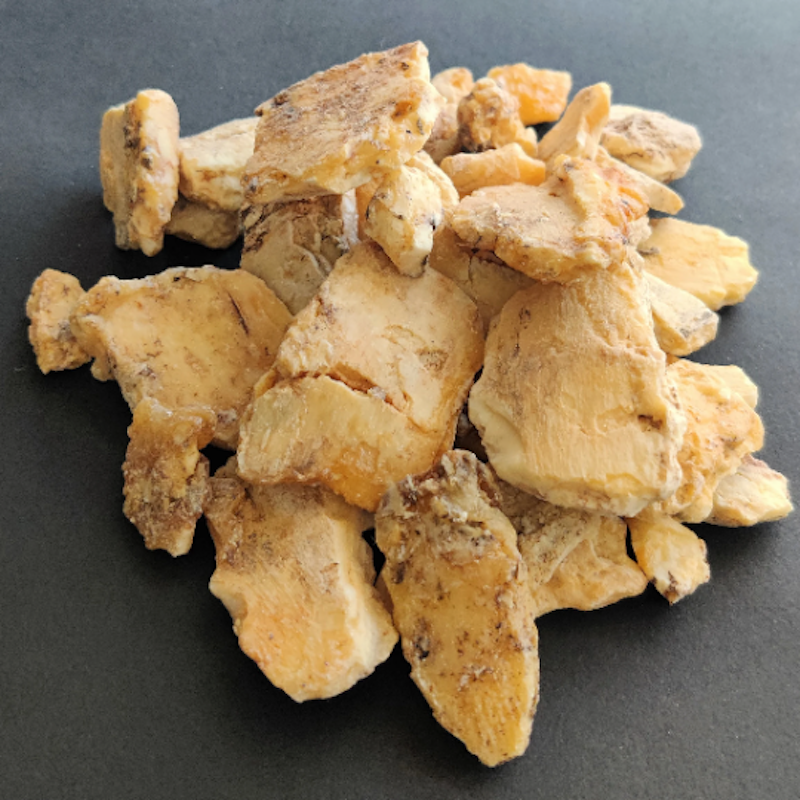
Sumatrana Benzoin-A New sustainable resin for Medicine, Incense and perfume
by Dan Riegler February 05, 2025 5 min read
Sumatrana Benzoin is harvested sustainably by farmer families in a small area of Northern Sumatra. This resin is unique in that it has floral notes other Benzoin types Lack. It has only recently been introduced to the Western market for use in perfume, medicine, incense and cosmetics.
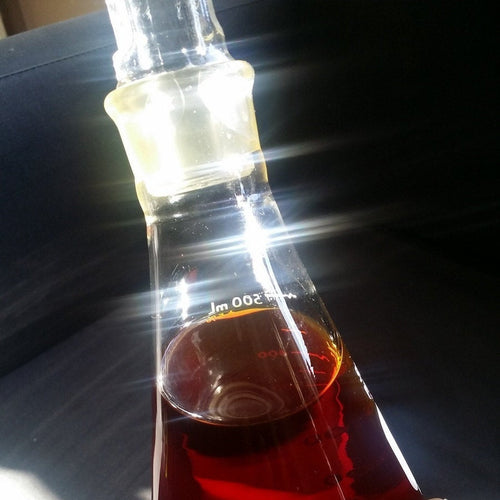
How to make a Medicinal Tincture of Frankincense
by Dan Riegler January 23, 2025 5 min read
There are several ways we can benefit from the anti-inflammatory and anti-cancer resin compounds found in Frankincense resin. A tincture is one of them and an easy product to make at home.
Recent Articles
-
How to make a Frankincense Resin Extract with Boswellic acids
February 13, 2025
-
Sumatrana Benzoin-A New sustainable resin for Medicine, Incense and perfume
February 05, 2025
-
How to make a Medicinal Tincture of Frankincense
January 23, 2025
-
Frankincense as Medicine-Truth, Myth, and Misinformation
January 15, 2025
-
Sustainable Frankincense from the Samburu women of Kenya
December 04, 2024
-
How to make a Tincture of Myrrh for oral health
November 27, 2024
-
Green Frankincense Demystified
October 04, 2024
-
How to make an oil extract of Frankincense-2 methods
January 17, 2024
-
Suhul Myrrh-A gift from the trees
January 03, 2024
-
How to prepare Winter Medicine with local Tree Resins
December 14, 2023
Categories
- Akba
- Ambergris
- Animal Welfare
- Animalics
- Anti-inflammatory
- Aphrodisiacs
- Aphrodite
- Apothecary Arts
- BA
- Benzoin
- Boswellia
- Boswellia Carterii
- Boswellia Frereana
- Boswellia Neglecta
- Boswellic Acids
- Boswellis Serrata
- burn incense
- cancer
- Censer
- Chest Rub
- Commiphora
- Commiphora Myrrha
- Copal
- Cough Balm
- DIY
- DIY Frankincense extract
- Fair trade
- ferula
- Frankincense
- Frankincense Absolute
- Frankincense as medicine
- Frankincense Extract
- Frankincense Neglecta
- Frankincense Sacra
- Frankincense Tincture
- Frankincense tutorial
- Incense
- Incense burners
- Incense Making
- Incense Resins
- kenya
- Medicated oils
- Medicine chest
- Muscle Rub
- Musks
- Myrrh
- Myrrh tincture
- new
- Perfume
- Perfume Ingredients
- Perfume Making
- Perfumery
- Pine
- Pine Resin
- Resin extract
- Royal Green Hojari
- Sacred Copal
- Samburu
- Spruce Resin
- Suhul Myrrh
- Sultans Select
- Sumatrana Benzoin
- Sustainability
- Sustainable Frankincense
- Sustainable Harvest
- tincture
- Traditional Medicine
- Tree Medicine
- Tree Resins
- Tutorials
- Wildcrafting
- Wood finishes
Where are you Blog posts Dan?
Please bear with me as I rewrite, update and link my old Blog posts to the new shop. If you don't see the tutorial or post you are looking for, pop in periodically. I should have them all up, updated and running in the next few weeks.
Subscribe
Sign up to get the latest on sales, new releases and more …
- Comments
- DISQUS
